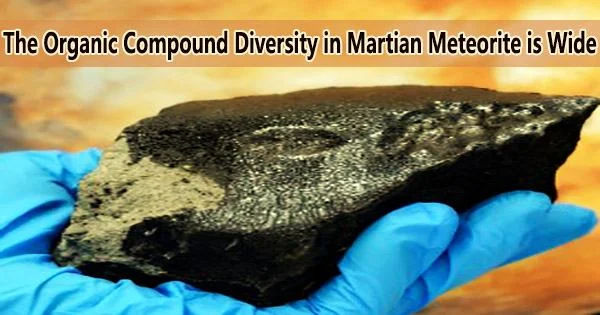A multinational team of scientists, including Andrew Steele from Carnegie and Philippe Schmitt-Kopplin of the Technical University of Munich and Helmholtz Munich, discovered that the Martian meteorite Tissint has a large diversity of organic molecules. Science Advances has published their research.
There are only five Martian meteorites that have been seen as they plummeted to Earth, and Tissint, which crashed and landed in Morocco more than 11 years ago, is one of them. About 30 miles away from the town it is named for, pieces of it were discovered dispersed throughout the desert.
This piece of Martian rock was propelled into space by a catastrophic event that occurred hundreds of millions of years ago on our neighboring planet. Scientists can learn more about the geologic past of Earth and the possibility that life has ever existed on the Red Planet by unraveling the genesis stories of the organic compounds found in the Tissint meteorite.
“Mars and Earth share many aspects of their evolution,” said lead author Schmitt-Kopplin. “And while life arose and thrived on our home planet, the question of whether it ever existed on Mars is a very hot research topic that requires deeper knowledge of our neighboring planet’s water, organic molecules, and reactive surfaces.”
Understanding the processes and sequence of events that shaped this rich organic bounty will reveal new details about Mars’ habitability and potentially about the reactions that could lead to the formation of life.
Andrew Steele
Carbon, hydrogen, oxygen, nitrogen, sulfur, and occasionally additional elements are found in organic compounds. Although prior study on Martian meteorites showed that they can be produced by non-biological processes, often known as abiotic organic chemistry, organic molecules are frequently linked to life.
“Understanding the processes and sequence of events that shaped this rich organic bounty will reveal new details about Mars’ habitability and potentially about the reactions that could lead to the formation of life,” added Steele, who has done extensive research on organic material in Martian meteorites, including Tissint, and is a member of both the Perseverance and Curiosity rovers’ science teams.
By carefully examining the meteorite’s organic composition, the researchers were able to establish a connection between various organic molecules’ types and variety and particular mineralogy. Their efforts led to the creation of the most thorough record of the variety of organic compounds ever made that could be detected in a Martian meteorite or in a sample that a rover had taken and examined.
This research revealed information regarding the evolution of activities taking place in Mars’ mantle and crust, particularly with reference to abiotic organics that resulted from water-rock interactions.
The abundance of organic magnesium compounds, a group of organic molecules never before observed on Mars, was of particular interest. These compounds provide new information about the high-pressure, high-temperature geochemistry that shaped the Red Planet’s deep interior and show a link between the carbon cycle and its mineral evolution.
According to the researchers, samples sent back from Mars by upcoming missions should offer a record amount of knowledge regarding the synthesis, stability, and dynamics of organic molecules in actual Martian environments.





